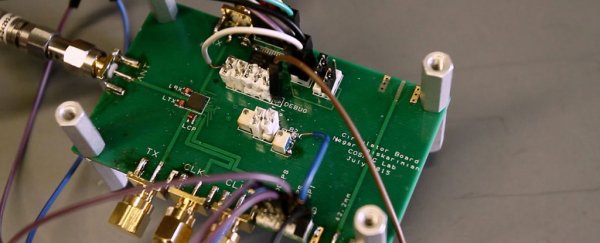Scientists in the US have made a major advancement in wireless technology, developing a Wi-Fi chip that only needs one antenna, instead of two, for transmitting and receiving.
While this was possible before, the bottleneck with transmitting and receiving from the same antenna meant that each function had to take turns, which throttles the capacity by half. This new chip solves that limitation, and in doing so, doubles the capacity (and speed) of wireless signals with a single antenna.
The system, called full-duplex communications, involves having the wireless transmitter and receiver of a radio working at the same time at the same frequency.
Electrical engineers from Columbia University achieved this last year using two antennae, but now the same team has managed to develop an even smaller component that only requires one.
"The way I like to think about it is it's like having a conversation between two people where both people can talk at the same time and still listen to what the other person is saying," says lead researcher Harish Krishnaswamy in the video below.
"So obviously you can imagine that if you're able to do that, conversations would take half the amount of time that they take right now. And similarly, in full duplex, if we could have transmitters and receivers working at the same time, at the same frequency, we'd immediately be able to double wireless capacity at the physical layer."
The component that makes full-duplex possible in the team's new chip is called the circulator. The circulator breaks Lorentz Reciprocity – a principle in electromagnetism that dictates that waves must travel in the same manner in forward and reverse directions.
"Reciprocal circuits and systems are quite restrictive because you can't control the signal freely," said one of the team, Negar Reiskarimian, in a press release. "We wanted to create a simple and efficient way, using conventional materials, to break Lorentz Reciprocity and build a low-cost nanoscale circulator that would fit on a chip."
Ordinarily, Lorentz Reciprocity can be disrupted via magnets, but magnets aren't suitable for placement on a silicon chip. To get around this, the researchers used a series of switches that emulate the effects of magnetism by rotating signals across a set of capacitors. This ends up negating reciprocity and enabling two-way signals on a single radio antenna.
The result could one day mean smaller, more efficient components in things like smartphones and tablets, and could also enable entirely new approaches to how wireless systems work. After all, once all our personal devices are transmitting and receiving data at twice their current capacity, who knows what else might be possible? Exciting stuff.

